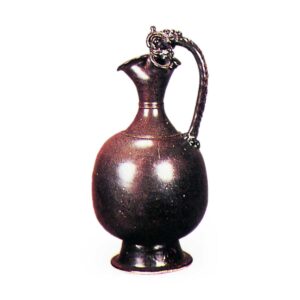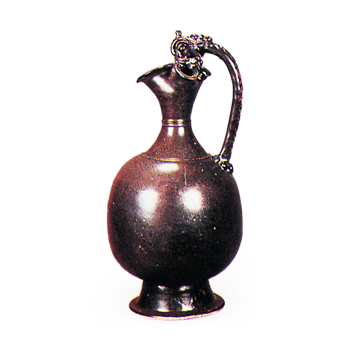
Black porcelain is the same term as white porcelain and celadon, and refers to black-glazed ware, mainly from the Sui and Tang dynasties of China, which have been attracting a great deal of attention in recent years. It is well known that deep white porcelain bowls were produced in the Sui Dynasty, but the fact that there are black-glazed bowls of exactly the same shape suggests that black porcelain appeared at least in the Sui Dynasty. This piece has a black or blackish-brown color with an iron-based glaze, and is somewhat translucent. The kiln site is not clear, but it is thought to have been somewhere in the Henan or Hebei area. This black porcelain kiln produced almost the same wares as white porcelain, including bowls, water bottles, and water jars, during the Sui and Sheng Tang dynasties.
From the latter half of the Tang dynasty, black porcelain with black glaze and white spots appeared, which was produced by applying a thicker, more plentiful glaze and pouring a cloudy white glaze called straw ash over it.
Most of them are jars and water jars, but the drum in the Palace Museum in Beijing is famous as a rare piece of porcelain. This type of black porcelain was produced in many areas from Henan to Shaanxi, including the Huangdao kilns in Suburbia County, Henan Province, and was eventually transformed into the Tianmu and Ame glazes of the Pizhou type during the Song dynasty.



